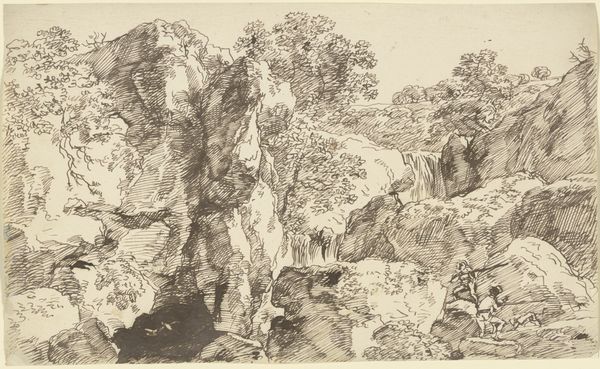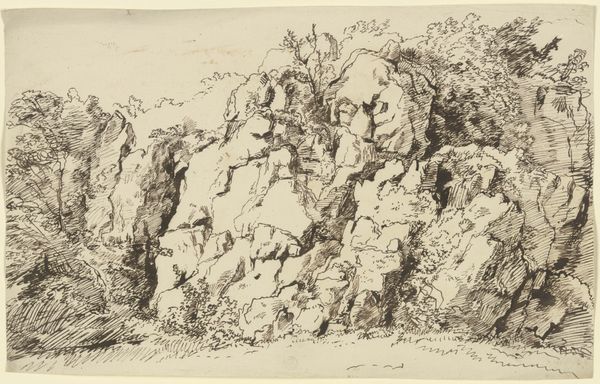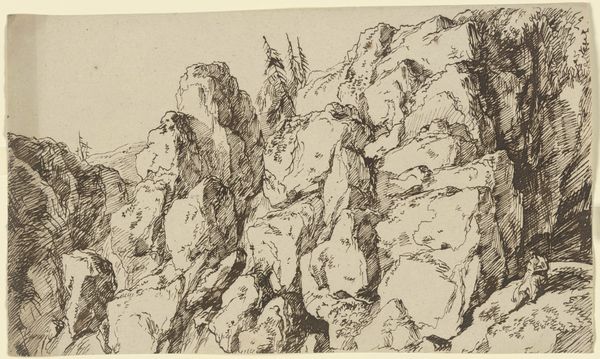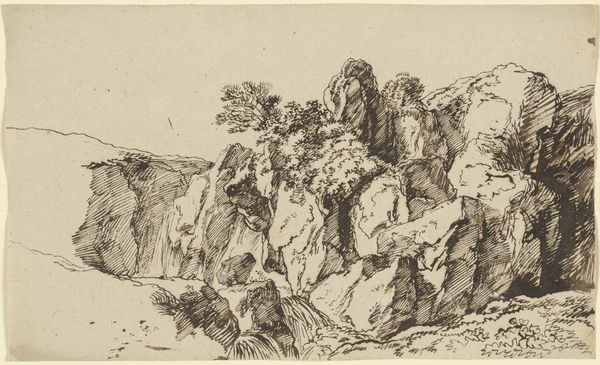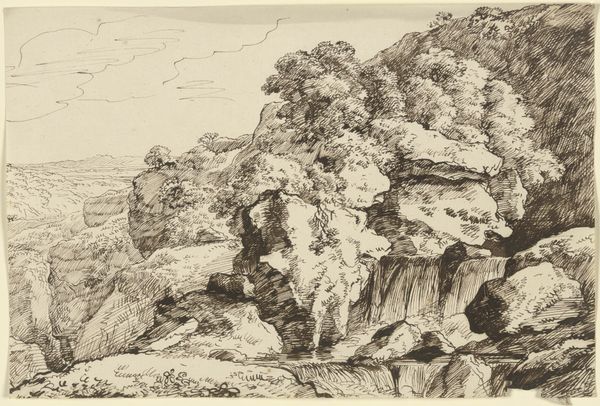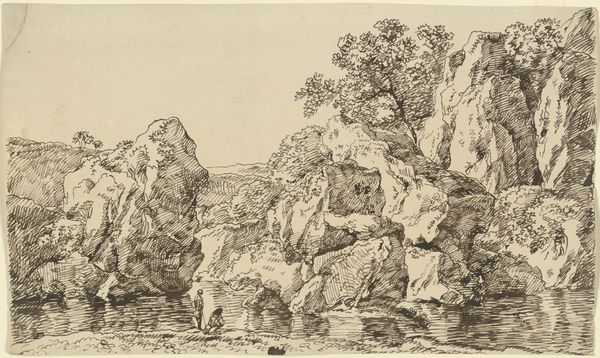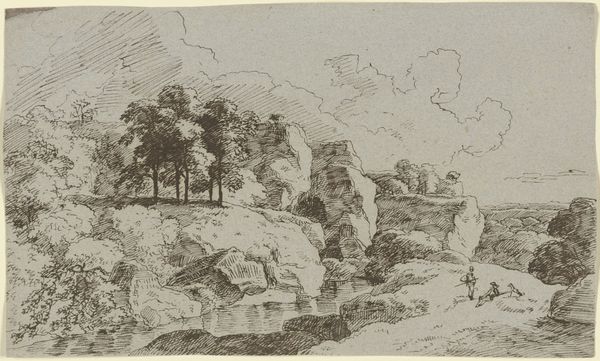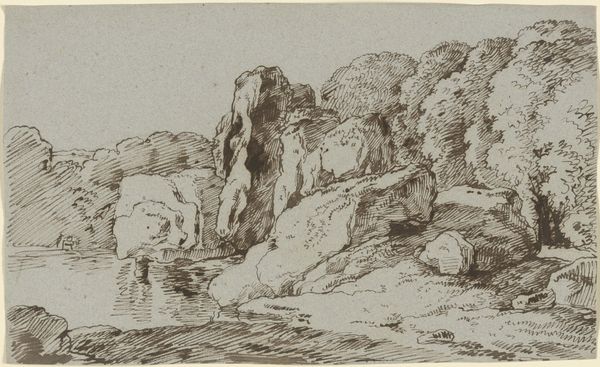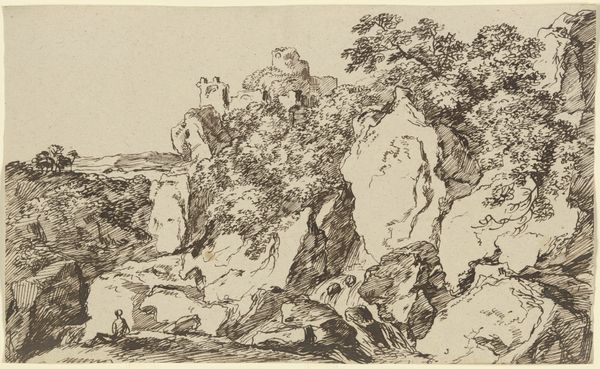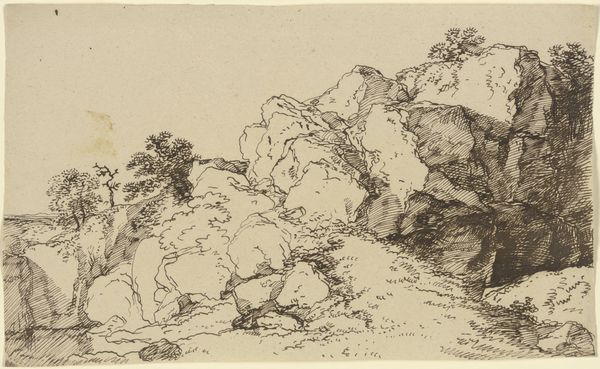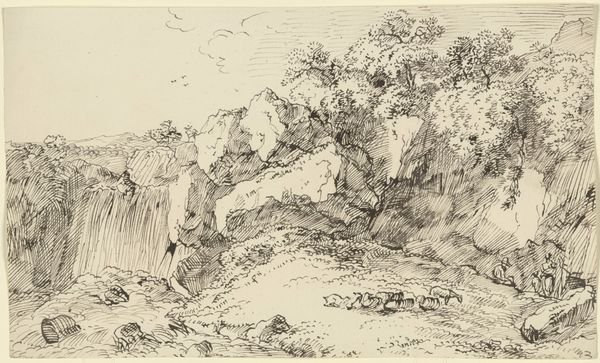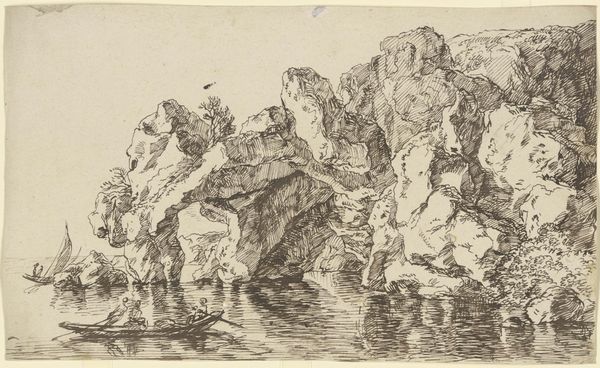
drawing, ink, pen
#
drawing
#
ink drawing
#
pen drawing
#
landscape
#
ink
#
pen
Copyright: Public Domain
Curator: I am struck by the visual weight in Franz Kobell's "Rock Face." Look how the dark ink renders the stone's mass. Editor: This is a stark work, yes. The overall impression to me is one of a raw, almost brutal landscape, reflective perhaps of the human impact on nature in that era. Curator: Indeed. And the composition emphasizes this, wouldn't you agree? The way Kobell employs such tightly packed lines to define texture, essentially abstracting the stone into geometric forms—it's like seeing geology through a philosophical lens. Editor: Certainly, the textures capture a drama in the rock's formation, though without historical context it is difficult to interpret more than that. I'd need to consider Kobell's relationship to environmental discourses of his time, class biases toward labor connected to stone quarrying or mining, to grasp if there is more here. The work is simply a pen and ink drawing. Curator: I think to view art from the period only from the view of our contempory discourses limits possibilities for finding ways in which these things are ever present. Consider the very use of pen and ink, chosen for their ready availability and connection to practices in the culture; it echoes the availability and cost involved with labour at that time. I cannot see how one element here is distinct. Editor: Interesting. Let's think back again to the way Kobell captures the light, though. Notice how light creates space. And how that negative space then allows the rocks themselves to seem almost… sentient? Curator: I agree the technique employed by Kobell—these tiny individual marks coalesce into forms. What did that signify in terms of human-nature relations, even colonial relations. Editor: You've made me reconsider it in terms of how representation interacts with sociopolitical understanding of what makes labour or even stone extraction sustainable for communities as the materials represent more than just surface realities but are imbued with histories that influence our understandings too. Curator: Exactly. Editor: So next time, instead of going with my own purely art historical appreciation, I will try not to limit my views to the canvas' borders.
Comments
No comments
Be the first to comment and join the conversation on the ultimate creative platform.
